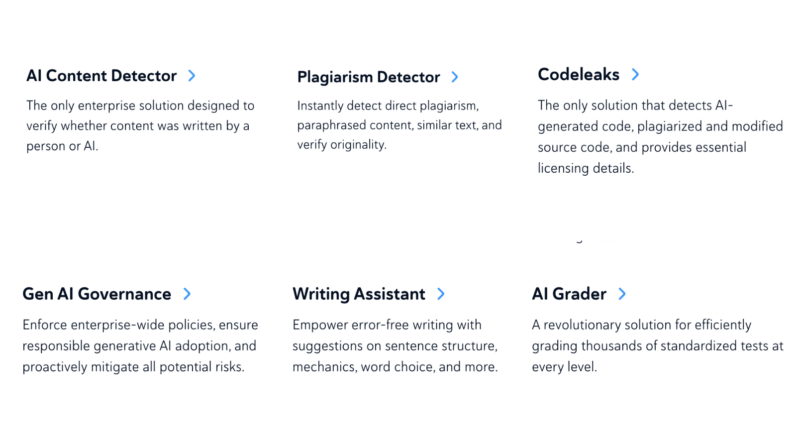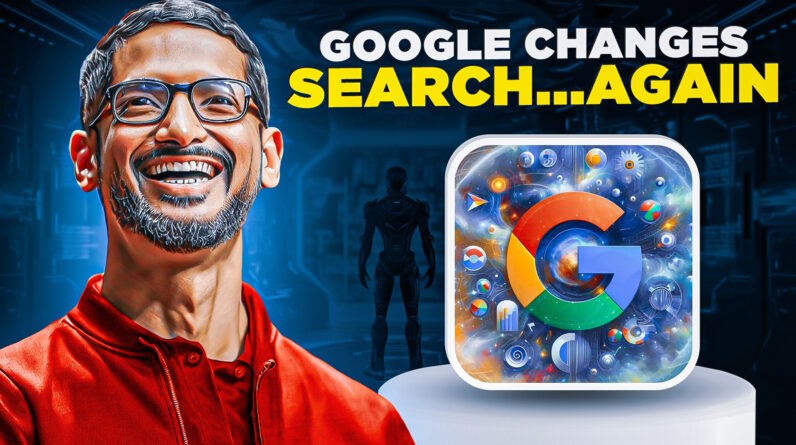What I’m about to write in this post could save you a lot of time and hassle in your online business.
It is especially important for those of you who are somewhat technical, know how to deal with the “innards” of a website, and like to fiddle with it.
I am not going to recommend any specific software or plug-ins. I am, however, going to share some hard-learned lessons on HOW to choose the right tools for your business.
Because… when you don’t do it right, it can suck a whole lot of time later.
Don’t ask me how I know. 😉
Table of Contents
My Long, Long History Of Choosing Software
My experience in this line of work is… well, long. That’s because I got started in this business way back in 1998.
I was “blogging” before “blogging” was even a word. WordPress did not exist. Back then, choosing software was not much of a thing because we were all hand-coding it or doing it with FrontPage (remember that piece of crap? 😉 )
I actually created my own content management system called Miraserver. It was quite developed, too. I used it for my own projects and also sold it (I think I sold about 150-ish licenses). This was when WordPress was just a baby.

My first membership site used a learning management system called Moodle. The membership part of things ran on Amember Pro. I played with Wishlist Member a few times. I used Ontraport for awhile with PilotPress. I was on MemberMouse for awhile. And now, something totally different.
When it comes to shopping carts, I’ve sold things on Clickbank, 1ShoppingCart, Nanacast, Ontraport. I’ve done it on the back of plug-ins like MemberMouse, too.
So, I’ve been around.
I’ve been in and out of a number of different platforms.
I’ve used third-party stuff and I’ve used stuff that I built myself from the ground up.
My “Pivot” During The Times of Pandemic
During the whole COVID-19 pandemic, a lot of business owners were looking for ways to “pivot”.
How (and what) can we change in our businesses to be better positioned to deal with a different reality?
Well, for me, I decided to use this time to make some major tech pivots in the business. I wanted to solve some annoying tech constraints because, if you let those things stack up, the technology can actually hold your business back.
In my business, I had a few issues:
- MemberMouse was at the core of the business and it was feeling like a dead end. It just wasn’t developing and I had already been more than patient about it.
- The drawbacks of MemberMouse (that they were not fixing) was literally costing us TIME, because of the interface was slow and, well, the opposite of streamlined.
- There was a lot of “clutter” in the system from old member levels, old bundles I couldn’t delete, old landing pages I wasn’t using anymore, old email marketing sequences that were no long reflecting current offers, etc. And I was getting confused by my own business. I needed to clear the weeds.
So, what began as a decision to finally leave MemberMouse turned into essentially a total re-build of the entire software stack that powers the Blog Marketing Academy.
- Instead of MemberMouse, I decided to use WP Fusion (read my WPFusion Review).
- Instead of MemberMouse order pages, I decided to start using ThriveCart (my Thrivecart Review). I already had an account and I was eager to use it.
- Instead of Thrive Leads, I moved all opt-ins to ConvertBox (my ConvertBox review). Makes my life easier.
- Instead of a theme that I had hacked together on my own, I switched the main Blog Marketing Academy site to Thrive Theme Builder (Thrive Theme Buider review). Oh man… so much easier!
- Instead of another theme I had hacked together for THE LAB, I decided to re-build the whole LAB on top of the BuddyBoss theme. Much more modern. Plus, using the BuddyBoss platform means I can now make the LAB more social and bring the community “in house”.
- Instead of a course system that was hacked together, provided me with no internal tracking of what my students were completing… I switched the whole thing to LearnDash. (Read my LearnDash review).
That setup works great and solved a lot of issues. But, then, I made another pivot. I have a thing for pivots, I guess. 😉
I decided to merge my membership site (The LAB) back into the main public site. In the process, the following changes were made:
- The whole site is now on BuddyBoss theme and I’m using Elementor as my page builder. Reluctantly, I had to stop using Thrive Theme Builder for this site.
- I stopped using Thrivecart and shifted into WooCommerce for tighter integration.
- I am using ConvertBox much less than I used to and not opt-in forms are built internally using Fluent Forms and Elementor itself. This provides all the control and integration with CRM tags that I lost when I switched over to FluentCRM.
So, yeah, it has been a journey. 🙂 And with that, let’s dive into some hard-learned lessons…
Lesson #1: Third-Party, Supported Software Is Better Than Custom
One of the MAJOR reasons for those software changes was simple…
Too much of my business had become reliant on me as the web developer.
While I enjoy that kind of thing (I’m a nerd), it is not my best use of time. I need to be creating material for my students, supporting my clients, and creating content for you guys. Those are my deliverables. For the most part, you guys don’t give a sh*t how my business works at the server level…. as long as it works. 🙂
I had become a bottleneck. My LAB setup had some big constraints, but it was either reliant on the MemberMouse dev team (and that wasn’t working out)… or it was reliant on ME.
Now, there is actually very little custom code involved in how my business runs.
- LearnDash does everything I need (and then some), plus has a wide community of support for add-ons, etc.
- The BuddyBoss theme and platform is being actively improved all the time.
- WooCommerce is incredibly well supported.
- I switched to FluentCRM and out of Drip for my email list.
- Elementor is constantly getting better and has quite an ecosystem of third-party support add-ons.
- WPFusion is being updated really frequently.
I mean, other than a few custom shortcodes and a few minor theme hacks in a child theme, I hardly have to program anything at all.
Which brings me to the next point…
Lesson #2: Paid Is Better Than Free (And Better For Your Business)
I know full well the mentality of “do it yourself”. I know what it’s like to value your own time so little that you’ll jump through all kinds of hoops to avoid spending money.
I also know full well what a foolish thing it is.
See, with my previous setup, I guess I could have hired a “tech guy” to make improvements to my system. Instead of me doing the development, I hire a team member to do it.
But, then I just increased my business expenses to hire somebody. Not only that, I just made THEM the new bottleneck! In the end, if you’re using software built by one person without any community support, you’re held hostage.
Even if you hire a company to build it, if they’re the only ones who know how it works, they can hold you hostage.
But, development takes time and resources. People don’t usually do this for free. And the best development work is going to be done when they’re getting paid.
This is why paid software is almost always better. Furthermore…
It is FAR more cost effective than hiring people to make it for you, or trying to do it yourself.
Look, like any good business owner, I track the budget of my business. So, when this article was first written in 2020, I was paying out $2,437.66 per year for various software tools and plug-ins that I used in my business. That didn’t include web hosting or the cost of my CRM at the time (Drip). I’m talking license fees for plug-ins or other optional SAAS tools.
I’m still paying for a few things that I plan to cancel soon, but cannot yet (like MemberMouse). If we remove MemberMouse, it comes out to $1,958.26 per year.
Broken down into a monthly amount, that’s about $203 per month.
Needly to say, this is far less than I could ever think to hire a web developer for. It is FAR less than my own personal time is worth. But, for that money, I have access to some of the best tools on the market that power my entire business.
It got even better, though. Once I cancelled MemberMouse and transitioned to FluentCRM, my monthly cost lowered even further.
When you are buying quality, supported software and plug-ins, you are making a very wise investment into your business that is VERY cost effective. The cost of doing it yourself, hiring somebody else, or even not having that capability at all… is usually FAR higher.
Lesson #3: If You Feel You Need To Have It Custom-Built, Question Your Assumptions
I’m at a point now in my business where… if I cannot find a well supported third-party tool to do it, I’m just not going to do it.
It’s not worth the hassle.
I’ve seen some cool membership sites that seem to have stuff in there which is custom-built. Cool. It’s pretty. Good for them. Whatever. But…
They’re a slave to it, in a lot of cases. It means they’re either busy little coders… or they need to have people on their staff to do it.
So, I would always stop and question your assumptions before you start looking at developing something yourself or hiring somebody to do it.
Do you really need that whiz-bang thing? Is it really going to be that important for you?
I’m not saying the answer is always “no”. Sometimes, custom development is called for to give you a true competitive edge. But, in a lot of cases, it isn’t.
Question your assumptions. Otherwise, you could end up down the road feeling trapped into a software base that is holding you back.
Change is part of life. It’s part of business, too.
For this reason, I choose to use software that doesn’t hold me hostage.
For instance, I’m a bit sour on MemberMouse now because I a had to pay for it otherwise any of my pre-existing members will simply stop being billed. This is a damn WordPress plug-in that I host, yet they’re billing me for functionality that I am hosting. It pisses me off. I will never recommend MemberMouse again because it is a dead end in about every possible way, and they trap you. Plus, even 2 years after I got rid of it, they still haven’t managed to update it in any measurable way.
Getting into proprietary, hosted software often presents the same problem. It is why I would not build a business on Teachable, ClickFunnels, or any of the other similar hosted solutions. Because, you’re trapped there, for the most part.
I want to host my own stuff. I want to use software that is open source GPL and community supported so that others can improve it and I can read the code myself if necessary.
When I host it and use community-supported tools, I can move it if I want. I can move the data around. Even if I stop renewing the license, the code still works.
I like to use tools that play well with others.
I also like the digital sovereignty that comes with using in-house tools rather than a bunch of third-party SAAS products I have to pay monthly for.
My Final Thoughts On This
There are more software options than ever out there to help you run your online business. It is freakin’ awesome!
And there will be a lot of reviews on it. Features. Pros and cons. I also will continue to post my reviews and comparisons of various tools to help you make those decisions.
In this post, I wanted to share some of my own personal guiding principles on how I evaluate these things for my own business.
It doesn’t mean we always get it right. As you can see here, I’ve made some mistakes. I’ve made some decisions I regretted later when it came to software choices. It is bound to happen.
But… software is a necessary component to this kind of business.
It is the software that allows us to scale and have a potentially worldwide impact from the comfort of a home office.
It is the software that allows you to deliver at a scale you’d never be able to pull off on your own.
I’m hiring the best developers to make my site work awesome without having to pay them anywhere near what they’re really worth.
It is a bargain.
But, you can also get swayed into selecting software that grows stale, holds you hostage, and hampers your growth.
I hope these lessons from my last 22 years in online business might help save you some time.






